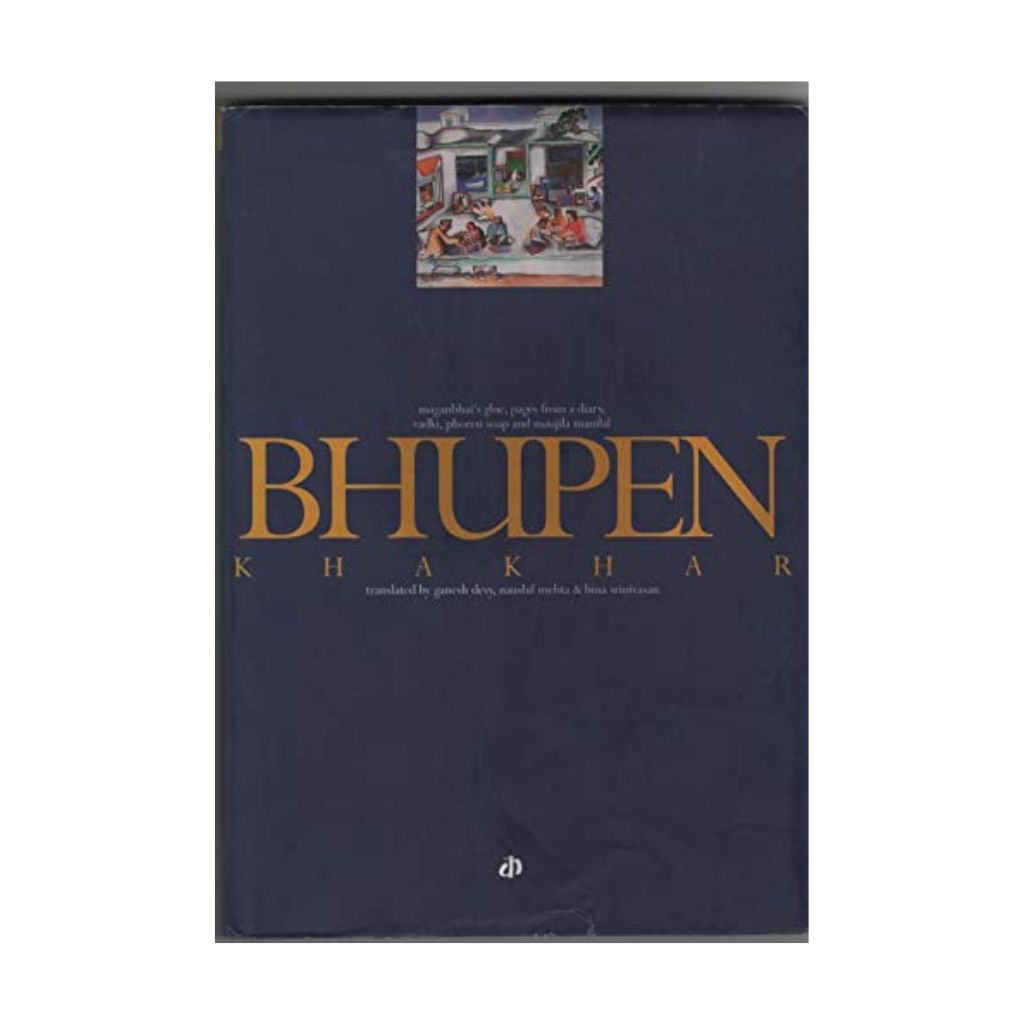Description
English translation
Bhupen Khakhar was an Indian artist. He was a member of the Baroda Group and gained international recognition for his work as “India’s first ‘Pop’ artist.” Wikipedia
About the Author
A self-taught artist, Bhupen Khakhar was born in Bombay on the 10th of March 1934. Despite having been qualified as a chartered accountant before moving to Baroda in 1962, he joined the Art Criticism course at the Faculty of Fine Arts where he started painting and became involved with the seminal Narrative- Figurative movement. Khakhar’s work has been characterized by a rare irreverence and a lack of inhibition about his lack of formal training. Indeed, he has been able to evolve his own mode of address that harnesses this lack of training to provide an edge to his expressions. His early work made use of ready-made images of deities from popular oleographs which were collaged and painted over, sometimes with graffiti. Khakhar’s interest in ‘degenerate’ forms of art led him to an exploration of artistic conventions in hybrid traditions that operate in the interregnum between classical miniatures and European illusionism. A deliberate naivete is visible in his paintings from the 1970s, coupled with a deeply felt sympathy with his subjects, who are often ordinary folk caught in an existence they do not quite understand. There is also biting comment on the gentle stupidity of the petit bourgeois life: a quality of being frozen in time permeates several of these representations of common people in all their vulnerability. The vulnerability argument is taken a step further in the early 1980s, when Khakhar’s homoerotic concerns come to be openly declared, often with selfreferential figures. The 1980’s also bring a move away from the blown-up-picture-postcard painting to spatial arrangements of greater complexity and articulation . Observation of the everyday plays an important role in Khakhar’s work, and he is able to zero in on ‘typical’ characters that the observer can often locate within his/ her world. His way of rendering the body with an unusual pliantness, like a bone-less structure, highlights the twin arguments of vulnerability and invisibility that he maintains.
He held his first solo exhibition in Bombay in 1965 and has had fourteen solo shows since in Bombay, New Delhi, Baroda, London, Ahmedabad, Amsterdam, Den Haag, Paris and Tokyo. Khakhar has also been widely represented in numerous group exhibitions including Art Now in India, London, Newcastle and Ghent (1966), IX Biennale de Sao Paulo, and the First Triennale-India, New Delhi (1968), ‘Pictorial Space’, New Delhi and Menton Biennale (1977), ‘Six who declined to show in the Triennale’, Ne Delhi (1978), ‘Narrative Painting’, London (1979), ‘Place for People’, Bomha (1981), ‘Six Indian Painters’, Tate Gallery, London (1982), Contemporary Indian Artists’, Centre Georges Pompidou, Paris (1986), Document a IX, Kassel (1992), ‘A Critical Difference: Contemporary Art from India’, UK (1993), Indian Songs, Sydney and Amsterdam (1994) and Traditions/Tensions, the Asia Society, New York and tour 1996.
[Source: http://bhupen-khakhar.com/]





